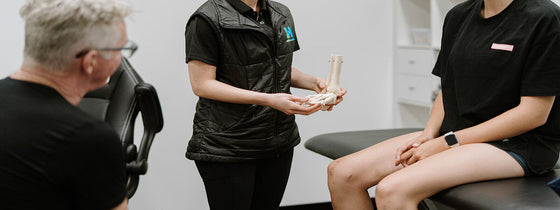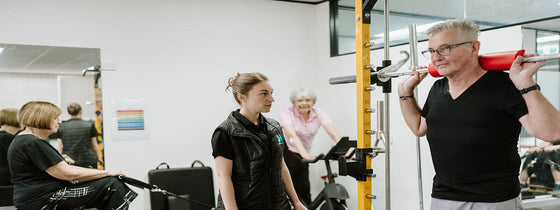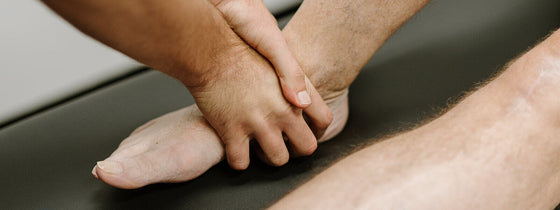Most of us will experience knee pain or injuries in our lifetime. The knee is a complex and multi-dimensional part of the body - it has different sources of pain and it can have a variety of causes. With a thorough assessment, your Physiotherapist can differentiate the cause of pain or type of injury and will determine the most appropriate management to get you back to full function.
The knee can be biomechanically affected by the hips, ankle or feet, while injuries can also occur due to direct impact, loading, or during running, hopping or a jumping action. Alongside this, there is the possibility of age-based conditions such as Knee Osteoarthritis in older people and Osgood Schlatters in the younger population.
Knee injuries can generally be separated into two categories - acute and chronic.
1. An acute knee injury can often be associated with a popping or pulling sensation, 'locking' of the knee, swelling and difficulty walking. Often, we see these occur during running-based sports when a person lands on uneven ground and twists their leg in an awkward position. Our physiotherapy team commonly sees injuries to the knee ligaments - such as an anterior cruciate ligament (ACL) or medial collateral ligament (MCL) injury - but we also investigate and manage meniscal injuries, acute tendon irritations and muscular tears around the knee.
2. Chronic knee injuries can feel like dull pain, which comes on slowly. The pain may be intermittent and feel worse with physical activity, like running and jumping or sitting for an extended period of time. These are usually associated with long-term biomechanical changes, a change in the knee loading patterns and/or footwear. Some injuries we commonly see are Patellofemoral pain syndrome, fat pad irritation, osteoarthritis and patella tendinopathy. Did you know 1 in 10 Australian will suffer from knee osteoarthritis, but only 1 in 30 Australian recreational runners will suffer. Interesting, hey?
If you, or someone you know, is suffering from knee pain, a physiotherapist is the best person to address symptoms and help you recover from your injury. Your physiotherapist will do a thorough, subjective assessment to look at your current load patterns and establish your injury onset. This includes a thorough physical assessment to differentiate any laxity, pain or tenderness in the ligaments of the knee, surrounding musculature and running/jumping/hopping techniques to establish a diagnosis and tailor a program to your exact needs. This will help you get back to your regular activities, pain-free, as soon as possible.

If you're experiencing back or neck pain with neurological signs and symptoms, a thorough neurological examination is crucial for accurate assessment and effective treatment. In this Optimal Tip learn more about what we mean by completing a neurological exam!

Squats, deadlifts, and calf raises are key movement patterns that should be part of every strength and conditioning program—regardless of age and activity level. These functional movements support joint health, improve posture and balance, and reduce the risk of injury while building strength where it matters most.

A ganglion cyst is a fluid-filled swelling that typically forms over a joint or tendon sheath, causing discomfort and pain, especially when pressing against nerves or joints. Proper assessment and treatment, including physiotherapy, are essential for managing symptoms and improving function in the presence of a ganglion in your hand, foot, or wrist.